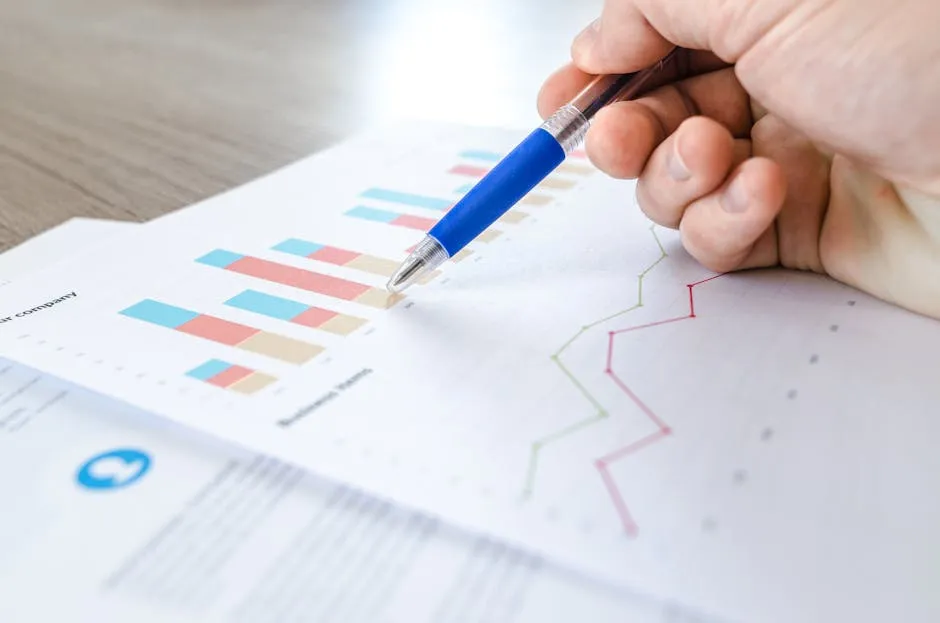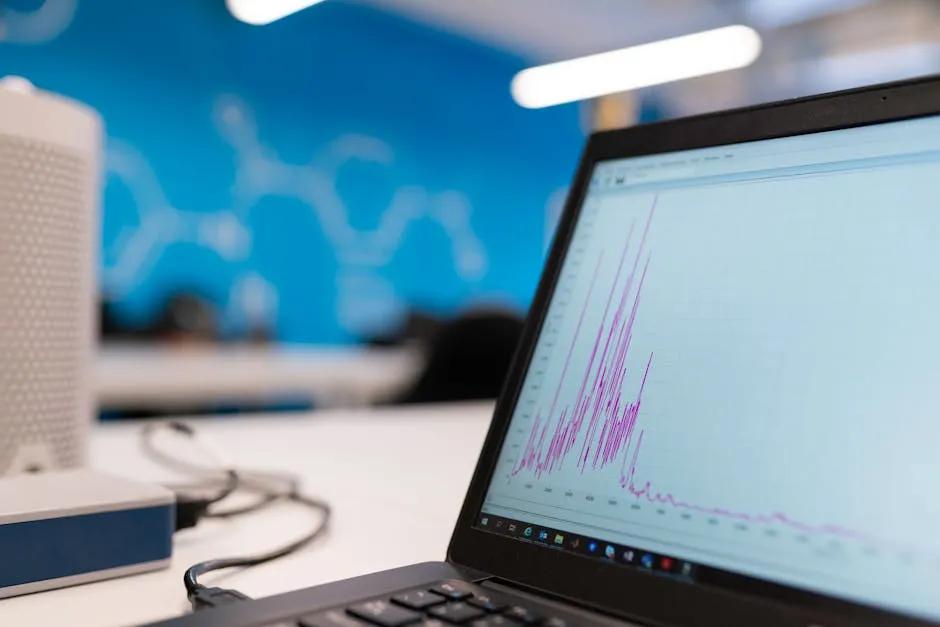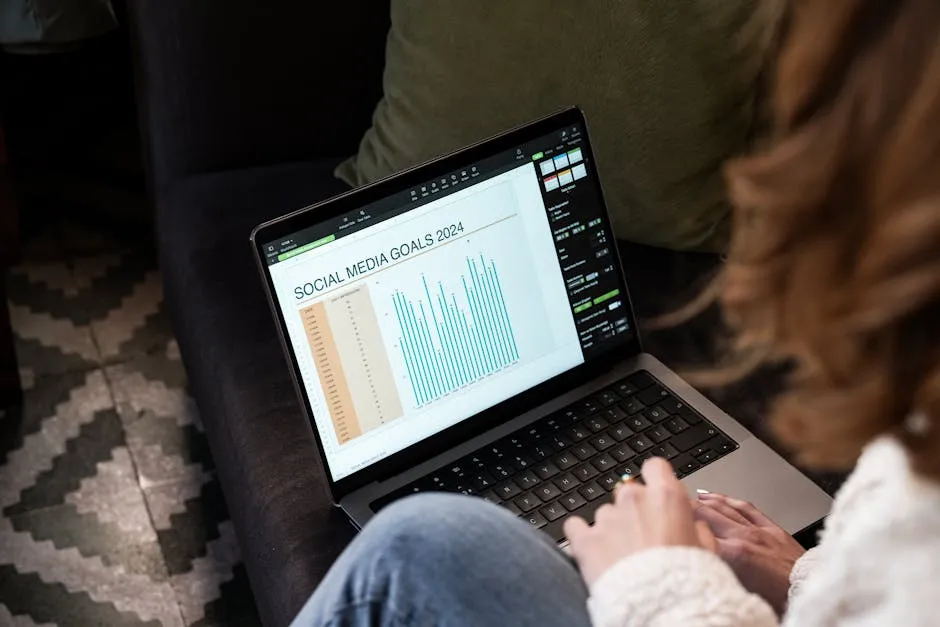Introduction
Statistics is the backbone of informed decision-making across countless fields. In business, companies rely on statistical analysis to understand market trends and consumer behavior. In healthcare, statistics guide critical decisions on treatment efficacy and public health strategies. The social sciences utilize statistics to examine societal trends and behaviors, providing insights that shape policies.
This article aims to provide a comprehensive list of topics for statistics projects, catering to students, researchers, and enthusiasts alike. Whether you’re a high school student tackling your first project or a college student diving deeper into statistical analysis, there’s something for everyone. The beauty of statistics lies in its versatility—there’s a topic that can ignite your curiosity and help sharpen your analytical skills.
As you explore the diverse applications of statistics, consider the methodologies involved. From descriptive statistics that summarize data sets to inferential statistics that allow us to draw conclusions from samples, the field is rich with opportunities for learning. So, grab your notebooks and prepare to embark on an exciting statistical journey!

Understanding Statistics
What is Statistics?
Statistics is a powerful tool for analyzing data and making sense of the world around us. At its core, statistics involves collecting, analyzing, interpreting, and presenting data. It allows us to draw meaningful conclusions from raw numbers and provides a framework for understanding variability and uncertainty.
There are two main branches of statistics: descriptive and inferential. Descriptive statistics focus on summarizing and presenting data in a meaningful way, using measures like mean, median, and mode. Inferential statistics, on the other hand, allow us to make predictions or generalizations about a larger population based on a sample. Both branches are crucial in different contexts, and mastering them can enhance your data analysis skills.
In today’s data-driven world, statistical literacy is more important than ever. As we encounter vast amounts of data daily, the ability to interpret and understand statistical information empowers us to make informed decisions. Whether evaluating news reports, understanding research findings, or analyzing business data, statistical skills are invaluable.

Key Concepts in Statistics
Understanding key concepts in statistics is essential for anyone looking to navigate this field effectively. First, let’s talk about the mean, median, and mode. The mean is the average of a data set, while the median represents the middle value when data is ordered. The mode, on the other hand, is the most frequently occurring value. Each measure provides unique insights and can tell different stories about the data.
Next, we have variability, which refers to how spread out data points are within a data set. The standard deviation is a common measure of variability, indicating how much individual data points differ from the mean. A small standard deviation suggests that data points are close to the mean, while a large standard deviation indicates greater spread.
Familiarizing yourself with common statistical terms is also crucial. Concepts like population, sample, and variable form the foundation of statistical analysis. A population encompasses all subjects of interest, while a sample is a subset of that population used for analysis. Variables are the characteristics being measured, such as height, age, or income.
Finally, methodology plays a pivotal role in statistical research. Understanding how to design experiments, collect data, and analyze results is key to producing valid and reliable conclusions. Whether through surveys, experiments, or observational studies, robust methodology ensures that findings are accurate and applicable in real-world scenarios.
With these foundational concepts, you’re well on your way to becoming proficient in statistics!

Main Topics for Statistics
General Statistics Topics
Statistics is a fascinating field filled with diverse topics. Let’s break down the broad categories that encompass the world of statistics.
First up, we have basic statistical methods. These are the bread and butter of any statistical analysis. Understanding how to calculate means, medians, and modes is crucial. You can think of them as your trusty sidekicks in navigating data. They help summarize large data sets into digestible nuggets of information.
Next, we can’t forget about data visualization. Ever tried to explain a complex idea with just words? It’s like trying to describe a beautiful sunset without mentioning the colors! Charts and graphs bring data to life. They make patterns and trends pop out, turning numbers into stories. Whether it’s pie charts, bar graphs, or scatter plots, the right visual can transform your message.

Introduction to statistical software is also a must. Programs like R, SPSS, and Python are essential tools for statisticians. They empower you to perform complex analyses while saving you from the agony of manual calculations. So, whether you’re a novice or a seasoned pro, familiarizing yourself with these tools is a game-changer. And if you’re diving into R programming, consider checking out R Programming for Data Science Book. It’s a fantastic resource that will help you navigate the world of R with confidence.
In summary, general statistics topics provide a solid foundation for understanding data. They cover essential methods, visualization techniques, and software tools that every statistician should know.

Specific Statistics Topics by Field
1. Business and Economics
When it comes to business and economics, statistics is the unsung hero. Every savvy marketer knows that analyzing consumer behavior can make or break a campaign. Take the impact of advertising on sales, for instance. Companies invest millions in ads, but how do they know it pays off? Statistical analyses can reveal correlations between spending and revenue, guiding future investments.
Market research is another vital area. Understanding consumer preferences helps businesses tailor their offerings. For example, a statistical analysis of unemployment rates and economic indicators can inform strategic decisions. Companies can adjust pricing, marketing strategies, and product launches based on this data, maximizing their chances of success. If you’re looking to dive deeper into the world of business statistics, grab a copy of Statistics for Dummies. It’s a great way to get started!
Statistics also play a significant role in financial analysis. Investors rely on statistical methods to evaluate risks and returns. By understanding trends in financial data, they can make informed decisions that lead to profitable outcomes. In short, statistics in business and economics are crucial for making evidence-based decisions that drive success. business statistics: communicating with numbers

Understanding how statistics apply in business contexts can greatly enhance decision-making processes. business statistics: communicating with numbers
2. Health and Medicine
Statistics in health and medicine can be a matter of life and death. Statistical applications are everywhere, from public health studies to clinical trials. For instance, the effectiveness of a new drug is often evaluated based on clinical trial data. Statistical analyses determine whether the drug significantly improves patient outcomes compared to a placebo.
Epidemiology also heavily relies on statistics. Public health officials analyze data to identify trends in disease outbreaks. For example, researchers can study the correlation between lifestyle factors and health outcomes. Understanding how diet, exercise, and other variables impact health can guide public health initiatives. If you’re keen on deepening your understanding of health statistics, I recommend Naked Statistics: Stripping the Dread from the Data. It’s an entertaining yet informative read!
Moreover, statistics help allocate resources effectively. By analyzing health data, officials can determine which areas need more attention. This ensures that funding and support go where they’re most needed, improving overall health outcomes for communities.
In conclusion, statistics play a vital role in health and medicine. They inform decisions regarding treatments, resource allocation, and public health initiatives, ultimately saving lives and improving well-being.

3. Social Sciences
Statistics is a magical tool in the realm of social sciences. It helps us make sense of the messy, chaotic world of human behaviors, beliefs, and interactions. Sociology, psychology, and education all harness the power of statistics to inform their findings and guide policy decisions.
In sociology, statistical analysis helps researchers understand public opinion. They often conduct surveys to gather data on various social issues. For instance, a recent survey might reveal how people feel about climate change or the effectiveness of government policies. By analyzing this data, sociologists can identify trends and patterns, shaping their understanding of societal dynamics. For a great introduction to statistics in social sciences, consider picking up Statistics Made Easy. It’s a classic!
Psychology also relies heavily on statistics. Researchers use statistical methods to assess the effectiveness of therapies or interventions. For example, studies may evaluate the impact of cognitive behavioral therapy on anxiety disorders. By analyzing the data, psychologists can determine if the therapy significantly reduces symptoms, guiding future treatment approaches.
Education is another field where statistics plays a crucial role. Researchers often investigate relationships between socioeconomic status and educational achievement. They may find that students from lower-income families have less access to resources, affecting their academic success. This information can lead to targeted interventions aimed at closing achievement gaps.
Overall, statistics in social sciences empower researchers to draw meaningful conclusions from data. By understanding public opinion, evaluating psychological treatments, and analyzing educational outcomes, statistics helps shape informed policies and practices that can enhance societal well-being.

4. Environmental Statistics
Environmental statistics is a fascinating field that focuses on analyzing data related to our planet and its health. With climate change and pollution becoming increasingly pressing issues, the role of statistics has never been more critical.
In environmental studies, statistical analysis is used to interpret pollution data. Researchers collect data on air and water quality, examining how pollution levels affect public health. For instance, a study might analyze the correlation between high levels of particulate matter and respiratory illnesses in urban areas. By using statistical methods, researchers can demonstrate the link between pollution and health impacts, informing public policy. If you want to delve into the intricacies of environmental statistics, check out Book on Environmental Statistics. It’s a great resource for understanding these critical issues.
Climate change research also heavily relies on statistics. Scientists utilize statistical modeling to predict future climate scenarios based on current data. They analyze temperature trends, carbon dioxide levels, and ice melting rates to forecast potential effects on ecosystems and human life. For example, a model might show how rising sea levels could threaten coastal communities. These insights are crucial for developing strategies to mitigate climate change impacts.
In summary, environmental statistics is vital for understanding and addressing the challenges posed by pollution and climate change. By analyzing data on environmental factors, researchers can provide evidence-based recommendations that guide effective policies for a more sustainable future.

5. Sports Statistics
Sports statistics are the unsung heroes behind the games we love. They provide insights into player performance, team dynamics, and even fan engagement. Without statistics, sports analysis would be like a game without a scoreboard—confusing and chaotic.
In performance analysis, teams often evaluate player metrics. Coaches and analysts sift through data to assess individual contributions to overall success. For example, a basketball team might analyze shooting percentages, assists, and rebounds to evaluate a player’s effectiveness. This data-driven approach helps teams make informed decisions about training and game strategies. If you’re interested in sports statistics, consider picking up Machine Learning for Dummies. It’s a fun way to explore how data shapes sports!
Beyond individual performance, sports statistics also reveal team trends over seasons. Analysts track win-loss records, scoring averages, and defensive ratings to identify patterns. For instance, a football team might discover that their performance declines in the second half of games. Recognizing this trend allows coaches to adjust strategies to improve outcomes.
Fantasy sports leagues have further popularized sports statistics. Fans eagerly analyze player stats to build their dream teams. This engagement creates a deeper connection to the sport, turning casual viewers into passionate followers. matt moore llc dallas smu sports statistics

Exploring sports statistics can enhance your understanding of player dynamics and game strategies. matt moore llc dallas smu sports statistics
6. Advanced Topics in Statistics
Advanced topics in statistics open the door to a world of sophisticated analysis and insight. Techniques such as regression analysis and hypothesis testing are foundational to modern statistical applications.
Regression analysis is a powerful tool for predicting outcomes. It helps researchers understand relationships between variables. For example, a study might use regression to predict housing prices based on factors like location, size, and amenities. By analyzing these relationships, statisticians can provide valuable insights to buyers, sellers, and real estate agents.
Hypothesis testing is another critical aspect of statistical analysis. It allows researchers to determine if their findings are statistically significant. For instance, a clinical trial might test the effectiveness of a new drug. By employing hypothesis testing, researchers can conclude whether the drug significantly improves patient outcomes compared to a placebo. This process ensures that results are not due to chance, offering confidence in the findings. If you’re looking for a comprehensive guide on this topic, consider How to Lie with Statistics. It’s a classic that humorously unpacks the misuse of statistics!

Understanding hypothesis testing is essential for interpreting research findings accurately. statistics hypothesis testing cheat sheet
Statistics Project Ideas
High School Project Ideas
High school students can start with simpler projects that are both educational and enjoyable. Here are some engaging ideas:
- Survey on Student Study Habits: Conduct a survey among classmates about study habits and correlate the data with their academic performance. You’ll uncover interesting trends about how study methods affect grades.
- Analysis of Local Traffic Data: Gather traffic data from local intersections. Analyze peak hours, accident rates, or traffic flow patterns. You might just discover the best (or worst) times to be on the road!
- Favorite Ice Cream Flavors: Create a survey to find out your peers’ favorite ice cream flavors. Use bar graphs to display the results and see which flavor reigns supreme.
- Impact of Social Media: Investigate how much time students spend on social media and how it correlates with their grades. Do more hours online lead to poorer performance?
- Body Mass Index (BMI) Study: Collect data on height and weight from classmates and calculate their BMI. Analyze the results to see how many fall within the healthy range.
- Pet Ownership Preferences: Conduct a survey on pet ownership among students. Analyze which pets are most popular and see if there’s a correlation with students’ personality traits.

College-Level Project Ideas
As students progress to college, they can tackle more complex topics that require deeper analysis and critical thinking. Here are some ideas:
- Economic Disparities Using Census Data: Analyze census data to explore income inequality in your area. What factors contribute to these disparities, and how can they be addressed?
- Healthcare Outcomes Analysis: Conduct a statistical analysis of healthcare outcomes across different demographics. Are there significant differences in treatment efficacy based on age, gender, or ethnicity?
- Consumer Behavior and Online Shopping: Investigate how different factors, such as discounts or shipping costs, influence online shopping behavior. Use regression analysis to identify key predictors of consumer spending.
- Impact of Education on Employment Rates: Analyze employment statistics in relation to education levels. Do higher education levels correlate with lower unemployment rates?
- Public Health Survey: Design a survey to assess public attitudes toward vaccination. Analyze the data to identify trends and correlations with demographic variables.
- Social Media and Mental Health: Explore the relationship between social media usage and mental health indicators among college students. Are higher social media interactions linked to increased anxiety or depression?

Professional and Research Topics
For professionals and researchers, the stakes are higher, and the topics require in-depth analysis. Here are some ideas:
- Evaluating Public Health Campaigns: Assess the effectiveness of a public health campaign using pre- and post-campaign data. Did the campaign lead to a measurable change in public behavior?
- Big Data Trends in Digital Marketing: Analyze large datasets from digital marketing campaigns to identify trends. What patterns emerge, and how can they inform future marketing strategies?
- Statistical Modeling of Climate Change: Use statistical models to analyze climate change data. Explore how different factors contribute to climate variability and predict future trends.
- Workplace Productivity Studies: Conduct a study on workplace productivity before and after implementing flexible work hours. Does flexibility lead to improved performance and job satisfaction?
- Consumer Sentiment Analysis: Use statistical methods to evaluate consumer sentiment on social media regarding a brand or product. How does sentiment correlate with sales data?
- Machine Learning Applications: Explore how machine learning algorithms can analyze complex datasets. Can they predict outcomes better than traditional statistical methods?

Statistics projects can ignite curiosity and foster analytical thinking. Whether in high school, college, or professional settings, there are endless possibilities to explore the world of data and its significance. Choose a project that resonates with you, and let the numbers tell their story!
Conclusion
Choosing the right statistics topic is crucial for any research or project. It sets the tone for your entire analysis and determines how effectively you can engage with your audience. A compelling topic not only piques interest but also allows for in-depth exploration of data and its implications. From businesses analyzing consumer behavior to healthcare studies evaluating treatment efficacy, the significance of a well-chosen subject cannot be overstated.
As you consider the diverse topics provided in this guide, think about their real-world applications. Are you interested in how statistics can help improve public health outcomes? Or perhaps you want to explore the impact of social media on consumer behavior? Each topic offers a unique lens through which to view the world. Embrace the challenge, and let your curiosity lead you to uncover exciting insights.
Don’t hesitate to share your experiences with statistical projects! Have you tackled a topic that sparked your interest? Or maybe you faced a challenge that seemed insurmountable? Engaging in discussions can provide new perspectives and inspire others in their statistical journeys. If you’re feeling overwhelmed or in need of guidance, seeking assistance with your project is always a smart move. There’s a wealth of resources and communities eager to help you succeed.
Statistics is a powerful tool for understanding our surroundings. Choosing the right topic is the first step in harnessing that power. Dive in, have fun, and remember—the world of statistics is full of surprises waiting for you to discover!
FAQs
What are some easy statistics topics for beginners?
For beginners, consider projects like analyzing student study habits or survey results about favorite hobbies. You could also explore the average time students spend on homework or examine trends in social media usage among peers. These topics require basic statistical understanding and provide a solid foundation.
How do I choose a good statistics project topic?
Start by identifying your interests. Look for topics with sufficient data available. Aim for clarity; avoid vague subjects. Ensure the topic is engaging and relevant, and consider discussing your ideas with peers or instructors for feedback. A clear problem statement will also guide your analysis effectively.
What tools can I use for statistical analysis?
Popular tools include R, Python, SPSS, and Excel. Each has unique features that cater to different levels of expertise. R and Python are great for programming enthusiasts, while SPSS offers user-friendly options for those less familiar with coding. Choose tools that suit your project needs and skill level.
Can statistics be applied in everyday life?
Absolutely! Statistics influence many daily decisions, from evaluating the risk of health-related issues to understanding trends in local news. For instance, when you see weather forecasts, they rely on statistical models. Similarly, sports statistics help fans and teams analyze performance, shaping strategies and expectations. Understanding statistical concepts can enhance your ability to interpret information effectively.
Please let us know what you think about our content by leaving a comment down below!
Thank you for reading till here 🙂
All images from Pexels




